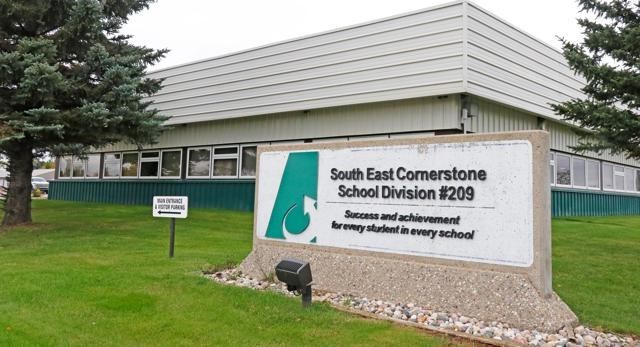SOUTHEAST SASK. — At 2 p.m. on March 27, the conference room in the С����Ƶ East Cornerstone Public School Division’s head office in Weyburn was suddenly filled with education expertise.
It was time for an update on progressions made in the school division’s facilities that involve over 8,000 students, about 550 educators and 500ish support personnel and administrators.
In what they refer to as the wall walk, the directors, superintendents and co-ordinators led the division’s board members through a series of reports on student achievements during the board’s open business session.
The wall walk got its moniker due to the fact that one entire, 18 foot wall is festooned with colourful graphs and charts that help the administration and education teams track student strides through the system from early learning, pre-school years right through to Grade 12 graduation status.
The lack of progress is also noted with explanations of how the corrections or intervention paths will help a student or group of students restore a sense of educational achievement.
The session was introduced and led off by director of education Keith Keating with some supporting remarks from deputy director Aaron Hiske.
The wall walk presenters were led off by superintendent Kevin Hengen who was followed by superintendents Catherine Hiltz and then Jeff St Onge who had just recently announced his impending retirement.
Other presenters who followed in order were Tracey Kiliwnik, the learning supports co-ordinator and Cheryl Anderson, the student services co-ordinator, Michael Graham, curriculum co-ordinator and finally Nathan Johnson, the human resources superintendent.
By using all the charts and graphic tracks on the wall, the presenters took their turn starting with Hengen who dealt with early learning issues and progress in the development of cognitive and motor skills with a base of 136 early years youngsters in homes or resource centres. He outlined the progress that has been made starting from 2021 to the current year.
He then swung over to the middle years progress and high school credit gains that showed common, steady patterns of growth including First Nations who were also tracked on spread sheets and charts as they made their way through the Cornerstone academic pathways.
Hiltz noted benchmarks and targets that “guide our work and where we put our support people and do interventions.”
She also spoke about early grades and progress С����Ƶ made in core class instructions and the steady upward trend “with little glitches up and down,” she said with significant growth in the Grades 4 to 6 grouping, especially in the fall and winter months, which, she said, is consistent and proven by the tracking data.
St Onge partnered with Kiliwnik to speak of their Cornerstone process of collecting and co-ordinating data, С����Ƶ one of only two school divisions in the province to track and report on treaty outcomes in this way within the province.
St Onge said they were proud of their precise reporting systems and “the time we spend in the schools is working, the administrators are listening.”
Kiliwnik spoke of the FNMI progress and the particularly impressive growth in the early school years with slower growth С����Ƶ noted in the later years with incidental growth from the Grade 9 level onward.
She did note that data shows intervention processes are working.
Prior to their appearance at the wall, Graham, co-ordinator of curriculum, referenced math data patterns showing where some schools were doing better, and superintendents can make reference to the charts as they map out year-to-year programming and where supports are needed.
Anderson spoke of student services with 694 students now registered on the caseload files. These students may require one or more support service or counselling at various levels including and up to even suicide watch. She noted how the data got worse this year in some areas, but in other categories every grade showed improvement except for one, while another grade level continued at a status quo level.
Johnson concluded the report with a celebration of increases in attendance, again supported by data with “The critically absent rate for students coming down,” he added.




